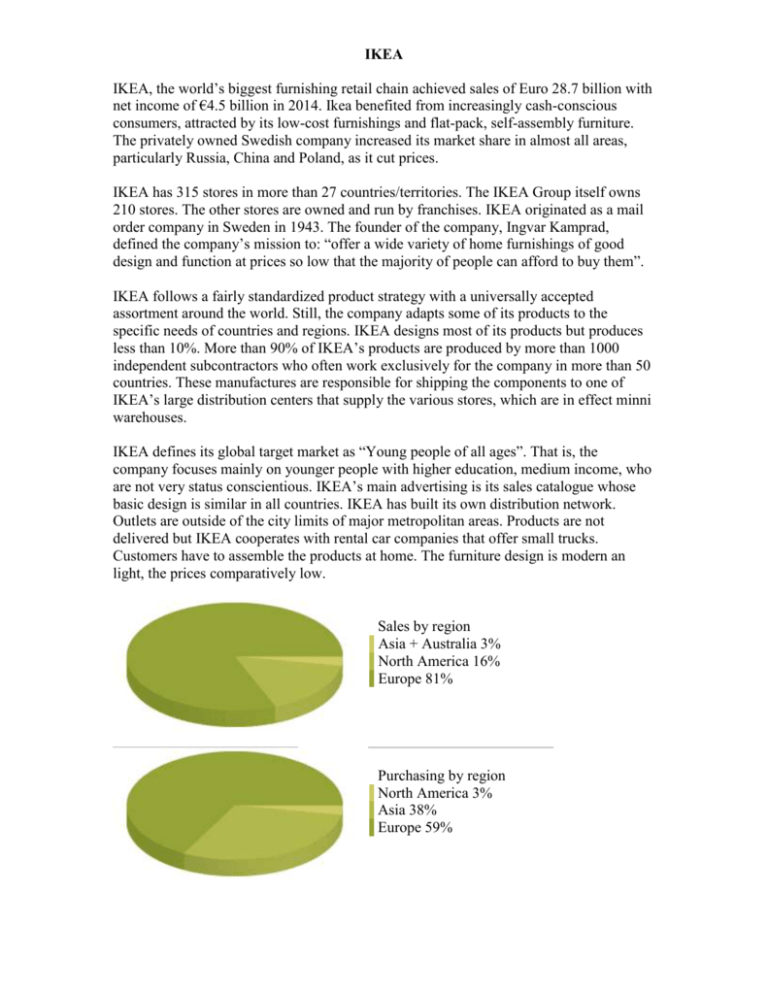IKEA
advertisement

IKEA IKEA, the world’s biggest furnishing retail chain achieved sales of Euro 28.7 billion with net income of €4.5 billion in 2014. Ikea benefited from increasingly cash-conscious consumers, attracted by its low-cost furnishings and flat-pack, self-assembly furniture. The privately owned Swedish company increased its market share in almost all areas, particularly Russia, China and Poland, as it cut prices. IKEA has 315 stores in more than 27 countries/territories. The IKEA Group itself owns 210 stores. The other stores are owned and run by franchises. IKEA originated as a mail order company in Sweden in 1943. The founder of the company, Ingvar Kamprad, defined the company’s mission to: “offer a wide variety of home furnishings of good design and function at prices so low that the majority of people can afford to buy them”. IKEA follows a fairly standardized product strategy with a universally accepted assortment around the world. Still, the company adapts some of its products to the specific needs of countries and regions. IKEA designs most of its products but produces less than 10%. More than 90% of IKEA’s products are produced by more than 1000 independent subcontractors who often work exclusively for the company in more than 50 countries. These manufactures are responsible for shipping the components to one of IKEA’s large distribution centers that supply the various stores, which are in effect minni warehouses. IKEA defines its global target market as “Young people of all ages”. That is, the company focuses mainly on younger people with higher education, medium income, who are not very status conscientious. IKEA’s main advertising is its sales catalogue whose basic design is similar in all countries. IKEA has built its own distribution network. Outlets are outside of the city limits of major metropolitan areas. Products are not delivered but IKEA cooperates with rental car companies that offer small trucks. Customers have to assemble the products at home. The furniture design is modern an light, the prices comparatively low. Sales by region Asia + Australia 3% North America 16% Europe 81% Purchasing by region North America 3% Asia 38% Europe 59% 1) What are significant differences between the IKEA concept and the concept of traditional furnishing stores? 2) How would you do an industry analysis of the U.S. Market? 3) What are the reasons for IKEA’s success? What is IKEA’s core competence? What are their main competitive advantages? 4) Describe IKEA’s value chain. 5) Compare IKEA’s mission to UNLV’s mission statement.







